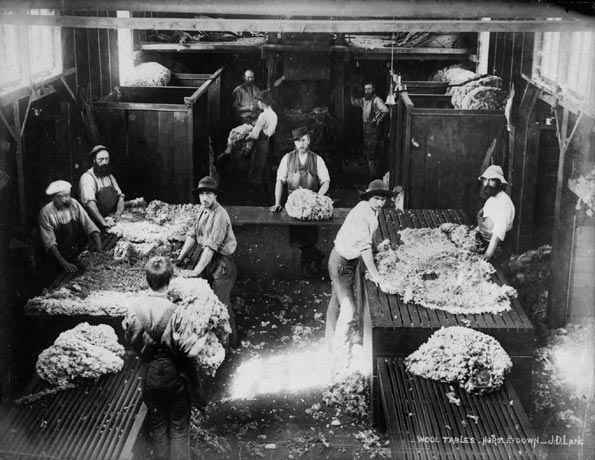 ‘Wool tables, Horsley Downs - J D Lang’, 1880s
‘Wool tables, Horsley Downs - J D Lang’, 1880s
TLF ID R5399
This is a black-and-white photograph taken in the 1880s showing wool tables in the interior of a woolshed at Horsley Downs, a sheep station in Waipara County, North Canterbury (central east coast, South Island of New Zealand). The photograph shows seven men in the foreground sorting and grading sheep’s wool on slatted sorting tables. In the background three men are stacking the graded wool into pens for baling. Scraps of wool are scattered on the floor of the shed. The photographer was J D Lang of E Wheeler and Son, and the photograph measures 20.2 cm x 15.5 cm.
